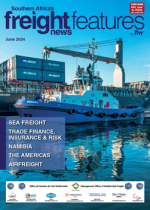Land and Sea Shipping has broadened its services to offer enhanced support to southern Africa's mining and agriculture sectors, optimising routes along the eastern corridor to maintain efficiency while ensuring solid operations continue through Durban. Moreover, the company has made significant investments to bolster its logistical capabilities, enabling it to efficiently handle larger volumes, even amidst existing bottlenecks in port and ship capacities.Manju Pather, co-founder and owner, emphasises that driving efficiency and sustainability in Land and Sea Shipping's operations remains a strategic priority. "Through fostering collaboration within the industry and continually enhancing our capabilities, we strive to deliver unparalleled service to our clients while positively contributing to the economic growth of the regions we ser ve."According to Pather, there is tremendous opportunity in adopting a collaborative approach within the industry. "By partnering with other logistics entities, we can enhance our collective capacity to move larger volumes of cargo more efficiently across multiple channels, thereby optimising the supply chain across South and East Africa," she said.With a positive outlook for the sea freight sector, Pather said collaboration made business sense. "We expect continued growth in demand, especially from the mining and agricultural sectors. With strategic expansions and collaborations, we are well positioned to tackle current challenges.”Pather said with container shipping, there was a constant imbalance of container equipment across various regions in southern Africa, creating a ripple effect in the demand for bulk or breakbulk ships. “Durban has also seen cargo being lost to other ports, so more ships are starting to call east coast Africa, and these regions are gaining popularity."Sea freight volumes continued to increase, driven primarily by the robust demand in the mining and agriculture sectors. "This growth is also facilitated by our strategic enhancements in route optimisation and capacity management, despite the existing infrastructural challenges."Asked about rates, Pather said they were impacted by the ongoing congestion at ports. "Bottlenecks and heightened competition for space are driving rates up. Additionally, f luctuations in global fuel prices and the ongoing adjustments to industry regulations inf luence cost structures, affecting overall freight rates."

